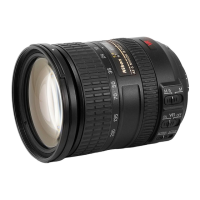
Do you have a question about the Nikon AF-S OX NIKKOR 18-200mm f/3.S-S.6G EO VR II and is the answer not in the manual?
| Focal Length Range | 18-200mm |
|---|---|
| Maximum Aperture | f/3.5-5.6 |
| Lens Mount | Nikon F |
| Diaphragm Blades | 7 (rounded) |
| Angle of View | 76° - 8° |
| Maximum Reproduction Ratio | 0.22x |
| Filter Size | 72mm |
| Image Stabilization | Yes (VR II) |
| Optical Design | 16 elements in 12 groups |
| Minimum Focus Distance | 0.5m (1.64 ft) |
| Autofocus | Yes (AF-S) |
Covers essential safety advice, including not disassembling, stopping use if malfunctioning, and avoiding flammable gas.
Details precautions for handling the lens, such as keeping it dry, avoiding wet hands, and sun exposure.
Identifies lens hood parts, mounting indices, lens mount gasket, and CPU contacts.
Details the zoom ring, focus ring, and the zoom lock switch for operational control.
Explains the focal length scale, distance scale, and distance index line for reference.
Describes the focus mode switch and vibration reduction ON/OFF and mode switches.
Explains how VRII enables slower shutter speeds and improves hand-holding stability.
Details the NORMAL and ACTIVE modes for vibration reduction and their effects on panning.
Highlights the use of aspherical and ED glass elements for image quality and pleasing bokeh.
Covers manual focusing, internal focusing system, distance scale, and depth of field preview.
Explains how to use the zoom ring and the zoom lock switch for portability.
Details setting the aperture and the effect of variable maximum apertures when zooming.
Describes how to use the M/A mode for autofocus with manual override capability.
Illustrates how vibration reduction works for camera shake and panning shots.
Instructs on activating or deactivating the vibration reduction system.
Guides on choosing between NORMAL and ACTIVE modes based on shooting conditions.
Provides tips for best results, including waiting for stabilization and setting modes for panning.
Details important warnings, such as not turning off during operation or using VR on a tripod.
Explains limitations of the built-in flash and the cause of vignetting with the lens hood.
Guides on correctly attaching the lens hood for optimal performance and protection.
Instructions for cleaning lens surfaces, avoiding solvents, and protecting contacts and gasket.
Advice on storing the lens for extended periods and protecting it from elements.
Lists the standard accessories provided and optional accessories available for the lens.
Details lens type, construction elements, picture angle, and focal length scale.
Outlines focusing system, aperture range, diaphragm, and vibration reduction method.
Provides physical dimensions, attachment size, and overall weight of the lens.
Describes scenarios where autofocus may struggle with small or low-contrast subjects.
Offers solutions for autofocus challenges, including focus lock and manual focusing.
Details the warranty period, exclusions for misuse, and liability limitations.
Provides instructions on how to submit the product for warranty repair with proof of purchase.
Guides users on how to locate authorized service stations via the Nikon website or phone.
Outlines terms for worldwide protection, including limitations on transferability and unauthorized repair.
Details the process for obtaining service outside the continental US, including shipping requirements.
Emphasizes the need to register within ten days of purchase to activate Extended Service Coverage.
Specifies ESC validity, exclusions for misuse, and performance by Nikon service stations.
Instructs on returning the lens with warranty, ESC document, and proof of purchase for service.
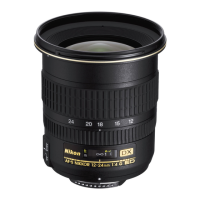
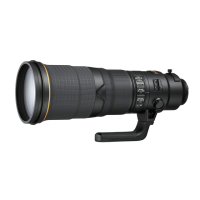
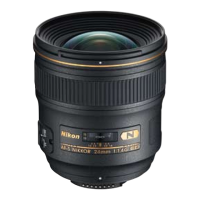
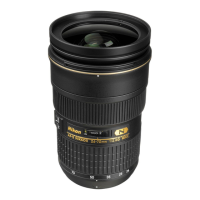
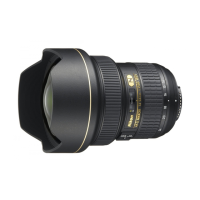

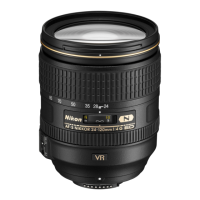

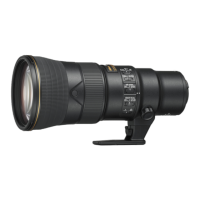
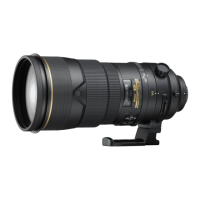
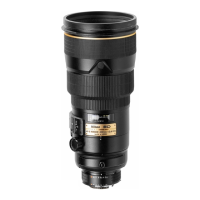
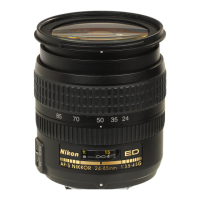
